-
Posts
1,781 -
Joined
-
Last visited
-
Days Won
8
Content Type
Profiles
Forums
Blogs
Gallery
Events
Store
Posts posted by azyeoman
-
-
The latest addition a rare officially named US POW Medal to:
Sgt. 1st Class Morris W. Yount
Serial Number 37380170
Born: 5 August 1921
Captured 12 Feb. 1951
Released 5 Sept. 1953
Camp 1 Ch'ang-Song (Permanent Camp 1 - Changsong - near Camp 3 on the Yalu River.) See map below:
http://www.pownetwork.org/pownet.secure.2/korean_war_pow_camps.pdf
Total number of Korean War POWs 2,701 died in captivity; 4,418 returned alive; 21 refused repatriation.
Dossier C8055073
Medal entitlement:
POW Medal (named Morris W. Yount)
National Defense Medal
US Korean War Medal
UN Korean War Medal
The Prisoner of War Medal is a military award of the United States armed forces which was authorized by Congress and signed into law by President Ronald Reagan on 8 November 1985. The United States Code citation for the POW Medal statute is 10 U.S.C.& 1128.
The Prisoner of War Medal may be awarded to any person who was a prisoner of war after April 5, 1917 (the date of the United States' entry into World War I was April 6). It is awarded to any person who was taken prisoner or held captive while engaged in an action against an enemy of the United States; while engaged in military operations involving conflict with an opposing Armed Force; or while serving with friendly forces engaged in armed conflict against an opposing Armed Force in which the United States is not a belligerent party. As of an amendment to Title 10 of the United States Code in 2013, the medal is also awarded for captivity under circumstances "which the Secretary concerned finds were comparable to those circumstances under which persons have generally been held captive by enemy armed forces during periods of armed conflict." The person's conduct, while in captivity, must have been honorable. This medal may be awarded posthumously to the surviving next of kin of the recipient. No more than one Prisoner of War Medal may be awarded. For any subsequent award of the medal, service stars will be awarded and worn on the suspension and service ribbon of the medal. The medal was designed by Jay C. Morris of the United States Army Institute of Heraldry.
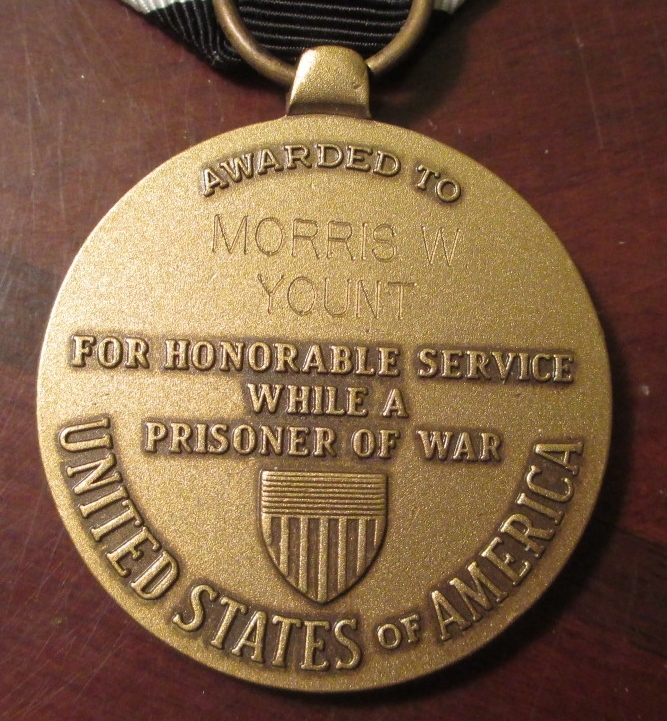
 0
0 -
1 Searchlight Regiment RA
Locations
Jan 40 Formed from 1AA Bn RE
Jan 40 BEF France
Jun 40 45 & 64 AA Brigades Cardiff/Swansea, UK
Feb 45 2 Army NW Europe
Batteries Sep 39 1, 2, 3, 4 Equipment May 40 Guy FBAX S/L Lorrys
For general info on "skylighters", please see http://www.skylighters.org/howalightworks/
The photo shows a captured Guy FBAX lorry, another one and a WWII search light.

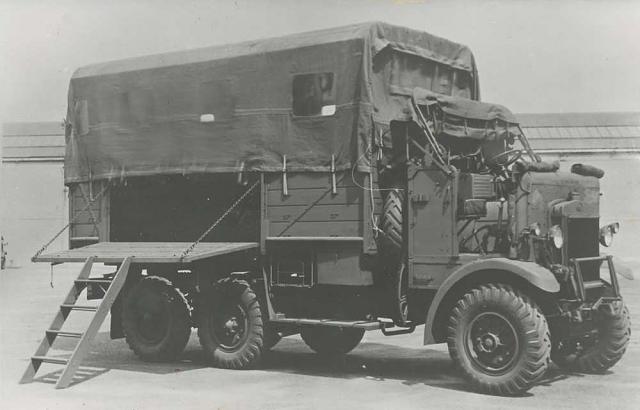
 0
0 -
This diary is being written on behalf of Percy William Frederick Reeves 4858025, a Bombardier in the 1st Search Light Regiment.
The 1st Battery was formed at Rhyl in 1940. Training was not finished when we were shipped out to relieve Royal Engineers at St Omer. We went on to Lille operating Search Light defence.
The training was finished on the 12th May; NCO's were made up from selected people and we were to leave for England in June 1940. I was promoted to Sargeant on the 1st June 1940 and came back to England for three weeks leave, returning to Fenam Barracks, in Newcastle, to be brought up to date on weapons etc.
The 1st and 2nd S/L Battery formed the 1st S/L Regiment (Colonel Goldney C.O.). The 1st S/L regiment had been the AA S/L defence for Lille until the German breakthrough in the Ardennes. We then drove into Belgium. La Basse formed the front-line as part of the "rough front-line". One day later we were ordered to Calais to form AA S/L defence. Two days after arrival (May 23rd, 1940) we were hurried into my lorry, at about 1.30 p.m., to deal with a "cornered German tank." we had no equipment as it was still packed up in our kit bags; so greatcoat and 80 rounds in cotton Bandolier formed our kit, along with my Bren gun plus anti-tank rifle. In all, about 50 men went to Les Attaques where we engaged a German armoured troup carrier. Finding volley-fire at the machine-gun vent made them recoil rather quickly (with shouts of injuries), we were then visited by a light spotting plane which went round and round just out of range. Some 45 minutes later German medium tanks were seen approaching. Shell fire then made 2nd lieutenant R.J.Barr ( C. Troop Commander) order "everyman for himself" and "make for Dunkirk."
We were surrounded by tanks and Panzer Grenadiers and were rounded-up from our hiding places. "for you the war is over" a German Captain and Sargeant greeted us. But they were very "nice" about it. I replied "perhaps" to his message. We then went to a collecting point, with no raised arms.
After a walk of three weeks through France and Belgium, eating dog biscuits and water from roadside pools, we reached Trier, in Germany. Then three days train journey to Poland. I was a prisoner in Shublin (21b) Prisoner of War camp. It was five years later, almost to the day, that we returned to England.
The above recollections can be read in Airey Neave's book (The Flames of Calais) from pages 42 to 47.
The services of The 1st/2nd S/L Regiment, together with other very-poorly equipped soldiers, caused such skirmishing as to make the German forces stop and consider their position. This gave the Rifle Brigade and The Queen Victoria Rifles time to make a fight lasting for four days. Much has been documented about the efforts of the soldiers who held back the German advance for such a long time with such minimal armaments; giving time to evacuate Dunkirk.
Decorations were given to
2nd lieutenant Barr - Military Cross
TSM Coppack - Military Medal.
All the 1st Search Light Battery were 1st and 2nd Militia officered by TA. All NCO's were also TA.The above was written by Simon Page on behalf of P.W.F. Reeves for the BBC WW2 People's War in 2004.
0 -
Photos of Calais in 1940. Second one is of the Citadel, a key defensive area in the battle, and the third is a view of the fisherman's quarter of Calais, the Courgain, the site of the last fighting during the afternoon of 26 May 1940. The last photo is of some very unhappy PoWs marching off to years of captivity.
Another site with a good article on the Battle for France, 1940. http://www.ibiblio.org/hyperwar/UN/UK/UK-NWE-Flanders/UK-NWE-Flanders-10.html
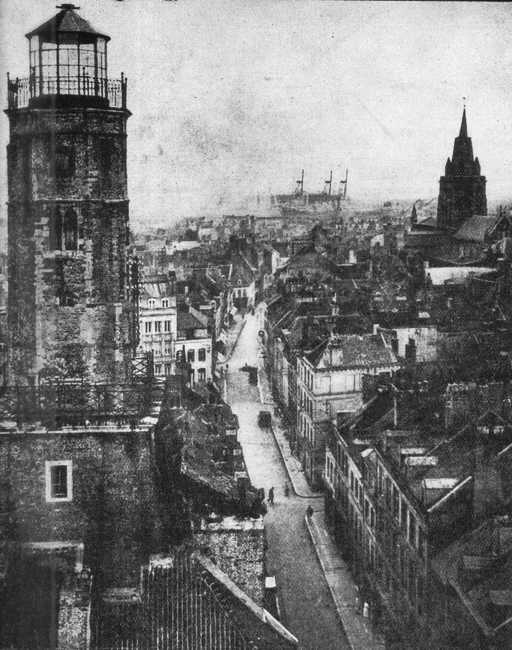
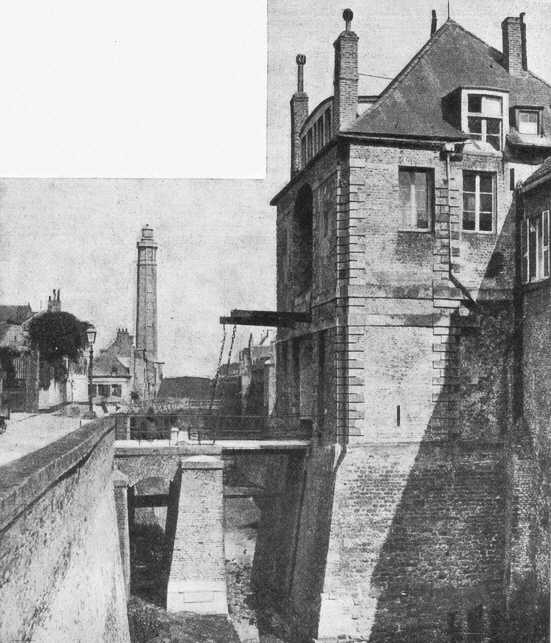
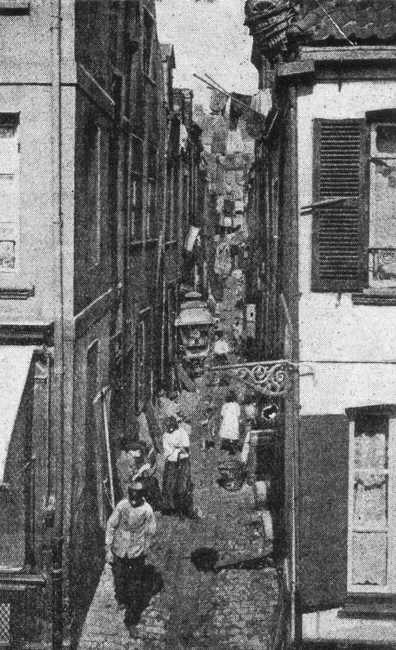
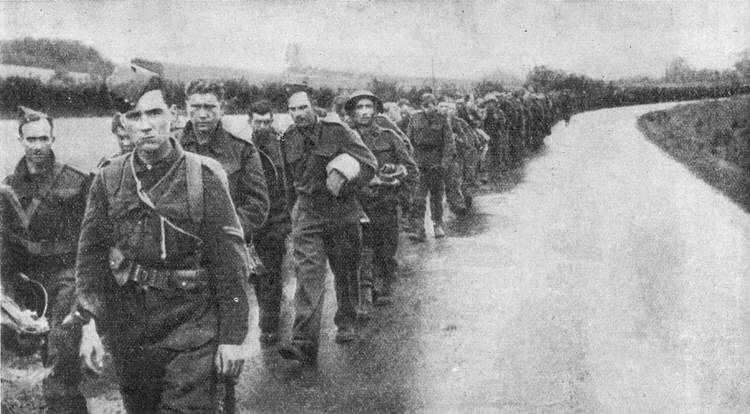 0
0 -
An article by Jon Latimer appeared in the July 1998 issue of World War II on the Battle for Calais, and it's very interesting background on Robert's trio.
When the English Channel port of Boulogne fell to the Germans on May 25, 1940, the troops defending Calais a little to the north were the only line of defense between the German panzers and the remnants of the British Expeditionary Force (BEF), desperately hoping for evacuation from Dunkirk.
At 9 p.m. that evening, Prime Minister Winston Churchill sent the following communiqué to the British commander at Calais, Brigadier Claude Nicholson: 'Every hour you continue to exist is of the greatest help to the BEF. Government has therefore decided you must continue to fight. Have greatest possible admiration for your splendid stand. Evacuation will not (repeat not) take place, and craft required for above purpose are to return to Dover…. Churchill wrote later, One has to eat and drink in war, but I could not help feeling physically sick as we afterwards sat silently at the table. As he did so, the defenders clung grimly to their positions, fighting until the following evening when their heroic resistance finally petered out. If one episode might be said to have permitted the miracle of Dunkirk to succeed, then it is probably the defense of Calais.
The German forces that crossed the frontiers of the Netherlands, Belgium and France on May 10, 1940, so completely succeeded in their aim of cutting through the Allies' defenses that within 10 days they had reached the Channel coast and cut the BEF and a French army off from the rest of France. On May 19, the commander in chief of the BEF, General John Vereker, 6th Viscount Gort, warned the British War Office that it might have to consider evacuating the BEF. The same day, discussions began between the War Office and the Admiralty under the code name Dynamo about the possible but unlikely evacuation of a very large force in hazardous circumstances.
Following an enforced day of rest, the panzers were on the move again on May 22. Having reached the coast near St. Valéry two days earlier, they were now instructed to swing northeast toward the Channel ports. Resistance was patchy and disorganized, and by the evening they had reached the gates of both Boulogne and Calais. The next day, the 1st Panzer Division was moved from the gates of Calais to attack the British toward the line of the Aa Canal to the east, and the 10th Panzer Division was brought in to mop up the defenders of the famous old port. The 20th (Guards) Brigade was holed up in Boulogne, where the medieval ramparts proved more formidable than expected, while in Calais a defense was being hurriedly prepared.
Calais had been used extensively throughout the so-called Phoney War period as a transit camp for men on compassionate leave. On May 20, Colonel R.T. Holland was appointed base commandant and ordered to arrange for the evacuation of useless mouths. At the same time, the anti-aircraft defenses were to be greatly improved and the 6th Heavy Anti-Aircraft Battery, Royal Artillery (RA), the 172nd Light Anti-Aircraft Battery, RA, and the 1st and 2nd Searchlight batteries were moved up from Arras and deployed in a semicircle around the town. Over the next four days, Holland began the process of evacuation on steamers from the Gare Maritime, while combat troops arrived on incoming vessels. In the meantime, he located some 150 noncombatants in the town, and a platoon of Argyll and Sutherland Highlanders was detailed to guard a Royal Air Force (RAF) radar station. There were also 1 1/2 French infantry companies based at Fort Risban, to the west, with two field guns at the citadel and a number of other French troops manning the coastal defenses.
There was considerable confusion throughout the next few days, with contradictory orders and a lack of firm control, so that it was not clear to anybody if the Channel ports were even to be defended. At 10 p.m. on May 21, Lt. Col. Reginald Keller was taking his wife to dinner on the eve of his expected departure for France when he was called to the telephone. He was ordered to return immediately to his unit, the 3rd Battalion, Royal Tank Regiment (RTR), for embarkation. After putting out calls in local cinemas and pubs, only one officer and 25 men were missing when the unit entrained for Dover at midnight. The tanks, however, were buried in the hold of the ship City of Christchurch in Southampton when the men left aboard Maid of Orleans at 11 the next morning. Arriving at the Gare Maritime at 1:15 p.m., they had no knowledge of their vehicles until they appeared out of the mist at 4 p.m. Had either ship been hit in the meantime, the battalion would have been useless.
Amid a mass of confusion and panic as refugees and noncombatants struggled to make good their escapes, Keller managed to locate Holland, who told him to get unloaded as soon as possible. At that point, Lt. Gen. Sir Douglas Brownrigg, adjutant general of the BEF, appeared on his way to be evacuated. He ordered Keller to move into harbor at the Forêt de Boulogne and get in touch with 20th (Guards) Brigade. Fortunately for Keller, he would be unable to comply with that order. Some three hours after the conversation, elements of the 1st Panzer Division were occupying the Forêt de Boulogne.
The unloading went slowly. Visits from the Luftwaffe were compounded by the discovery that all the weapons were packed in mineral jelly, and that many parts for weapons, vehicles and radios were missing. During the night, contradictory orders were received from Gort's headquarters and from Brownrigg (now safely ensconced in Dover). A patrol of light tanks was sent out at 6:30 a.m., May 23, but ran into trouble, and the unloading was still incomplete when Keller decided that he must try his best to follow Gort's instructions and move toward St. Omer in the opposite direction from Boulogne. At 2:15 p.m., his column moved out through a dense swarm of refugees. After a mile, they saw an armored column halted under some trees. Major Quentin Carpendale described what happened: I moved my troop across country to investigate and thought they must be French because I had never been led to believe that there was any chance of meeting Germans in force. We came upon the column which was stationary and resting and they were as surprised to see us as we them–there was only 20 yards between us when I realized they were Germans. An officer fired a revolver at my head as I was looking out of the turret.
Keller was forced to retire to the village of Coquelles. There he was told that Brigadier Claude Nicholson wanted to meet him. Get off the air, he replied. I'm trying to fight a battle! Around 5 p.m., the two met at the village, and Keller learned that Nicholson had been appointed commander of the Calais garrison, which included Keller's command. Known collectively as the 30th Brigade, formed the previous April for service in Norway, the infantry component was comprised of the 2nd Battalion, King's Royal Rifle Corps (KRRC), and the 1st Battalion, The Rifle Brigade (RB), both of which were regular motor battalions, and the 1st Battalion, Queen Victoria's Rifles (QVR), which was a Territorial Army motorcycle battalion.
The latter was equipped and trained to act as divisional cavalry for the 1st London Motor Division, a home-defense formation. The commanding officer, Lt. Col. J.A.M. Ellison-McCartney, was the bursar of Queen Mary College of the University of London. Many of his best men were away attending officer training courses or had returned to industry. In their place, he had 200 militiamen, but the unit was hopelessly ill-equipped, even to undertake its intended role. A third of the men were armed only with pistols, for which they had received no training. Having received orders to move overseas, they were then told that they could not take their transport and arrived on the quayside at Calais in circumstances very similar to those of the 3rd Battalion, RTR, on the afternoon of May 23. Colonel Holland was astonished to find that a motorcycle battalion had been ordered to leave its transport in England; nevertheless, he directed them to block the six main roads into town, an enormous perimeter for less than 600 men with no transport.
The Green Jackets of the 1st Battalion, RB, under Lt. Col. Chandos Hoskyns, and the 2nd Battalion, KRRC, commanded by Lt. Col. Euan Miller, were much stronger and better equipped, as well as being prewar Regulars from regiments with outstanding traditions. The first to arrive on May 23 were the men of the 2nd Battalion. They had made a long and difficult journey from East Anglia via Southampton and were fortunate to be short only a few scout cars. Embarkation was a complete muddle as overzealous staff officers took over the proceedings, and the regimental officers were pushed to one side. Consequently, disembarkation was equally chaotic as men were separated from their units. Accompanying the battalions were the 229th Anti-Tank Battery, RA, and Brigadier Nicholson and his headquarters staff. However, nobody in either battalion was at all clear as to what was expected of them.
During the crossing, as they were subjected to air attacks and the sound of gunfire ashore grew louder and more distinct, Nicholson directed the first unit off to take the right side of the town. Thus, the 2nd Battalion, KRRC, marched by companies along the south edge of the Bassin des Chasses de l'Est, arriving at 2:30 p.m. to await their transport. The 1st Battalion, RB, took a position in the sandhills to the north. Major Alexander Allan wrote an account of their arrival: Broken glass from the station and hotel buildings littered the quay and platforms in which many bomb craters were visible besides overturned and bombed trucks on the lines. Troops were being loaded for the return journey to England. These troops were in the main non-combatant personnel, RAF ground staff, HQ clerks, etc., who suffered a severe battering from the Luftwaffe on their way to the coast, Allan wrote. They bore every sign of this and made a far from cheerful welcome to the theater of war.
With the personnel ashore only an hour before the vehicle ships arrived, Nicholson received an order from the War Office which could only be carried out with motor transport. The Rifle Brigade was to accompany a column of 10-ton trucks carrrying rations to Dunkirk for the BEF, which had been on half rations since the retreat to the coast began. The task was to be given priority over all other considerations. The only chance of success was to move immediately, but that was impossible.
While the 30th Brigade was disembarking and trying to get organized, the battle for Calais was commencing in earnest in the countryside beyond. Assault Group Krüger of the 1st Panzer Division was moving eastward, outside the southern perimeter, when it encountered the 3rd Battalion, RTR. After a brief fight, German light tanks advanced on the St. Omer canal, where they were held up for half an hour by C Troop of the 1st Searchlight Battery under 2nd Lt. R.J. Barr. Even when assaulted by heavier German tanks, the troop held on for three more hours before surrendering. The defense of Orphanage Farm, site of Air Defence Calais' headquarters, under Lt. Col. R.M. Goldney, became the focal point of the battle for the next five hours. Between 2 and 7 p.m., the defending force was subjected to fierce shelling and bombing until Goldney decided that the position was no longer tenable. With the farm in flames, the defenders retired into the town.
The panzers' remorseless advance had been hampered on its left flank by tanks and searchlights. The 1st Panzer Division's war diary for May 23 stated: Assault Group Krüger…stood at the gates of Calais when darkness fell. It was reported that the town was strongly held by the enemy and that a surprise attack was out of the question. The capture of Calais was handed over to 10th Panzer Division while 1st Panzer Division was ordered to push on towards Gravelines and Dunkirk. Had Calais fallen on the 23rd, there would have been nothing to stop the panzers from reaching Dunkirk before the defenses were organized. At the same time, the day's fight had bought a breathing space for Nicholson to organize his own defense.
Nicholson had received orders from Brownrigg to advance from Calais and attempt to relieve Boulogne. Had he made such a move with the 3rd Battalion, RTR, and his motor battalions, he would have been quickly overwhelmed, lacking any artillery support as he did. But Nicholson was a cool-headed professional and soon realized that Brownrigg's orders were impossible. He appreciated that the defense of Calais itself was the urgent task.
While the engagement of the afternoon was in progress, the 10th Panzer Division was ordered by General Heinz Guderian to take the town as soon as possible. The divisional commander, Maj. Gen. Ferdinand Schaal, initially planned a coup de main but was to be disappointed. His men had been in continuous and fast-moving action for almost two weeks and were exhausted and suffering from casualties, most recently from sustained RAF air attack. Throughout May 23 and 24, Schaal demanded heavy anti-aircraft protection, and Guderian was concerned himself. At 5 p.m. on May 24, some hours after the attack on the town had been launched, Guderian told Schaal: If there are heavy losses during the attack on Calais, it should only be continued with support from dive bombers and when heavy artillery can be brought up after the surrender of Boulogne. There must be no unnecessary losses.
As Schaal pondered his plan of attack, Nicholson was in Holland's cellar headquarters on the Boulevard Léon Gambetta. He had problems of his own, stemming from his large perimeter and limited resources. A senior French army officer had arrived from Dunkirk and was placed under Nicholson's command by the French Corps at Dunkirk. A number of coastal artillery emplacements were also taken over, although most were designed to fire out to sea and were of limited value. The fixed defenses of Calais had a long history and were begun in the 16th century when it was an English town. The remaining ramparts and bastions, even where they had been improved since the FrancoPrussian War of 1870, could not stop a determined force with modern artillery and air support, however. Nicholson knew it was pointless to put his regular troops in front of those ramparts, and after careful study of the street plan, he decided that the best hope lay in the canal lines within the town. He therefore issued orders that the outer perimeter was to be held and all roads, railroads and other approaches were to be blocked. As the battalion commanders left to organize their areas, the sound of firing could be heard drawing closer.
Throughout the night of May 23-24, it remained unclear whether the brigade would be evacuated. Conflicting reports were received, and by the early morning of the 24th, around 2,000 of the defenders of Boulogne had been evacuated. At 3 a.m., a message was received that the 30th Brigade would also be evacuated. The message arrived while Nicholson was with Hoskyns on the Dunkirk road preparing to escort the BEF rations. He duly ordered his staff to prepare an operation order to that effect, to be implemented the following night. The attempted ration run ended inevitably in failure, with tanks lost and the riflemen returning to Calais. It was now obvious that the town was surrounded.
By 7:30 a.m., it was widely known that the plan was to evacuate and, consequently, unloading at the Gare Maritime stopped, although only half of the 1st Battalion's transport had been brought ashore. With shells falling and her decks already covered with wounded, City of Canterbury departed at 8:30 a.m., taking the other half of the vital transport. Throughout the morning of the 24th, nonfighting men were released to join those aboard Kohistan, which left at noon. Nobody knew at the time thatKohistan was the last ship to do so.
After the incident on the Dunkirk road, Nicholson returned to the Boulevard Léon Gambetta, and the real battle for the town began. The Germans attacked at dawn, under cover of heavy and accurate mortar and artillery fire, moving against the south and southwest of the town and the advanced positions held by the 1st Battalion, QVR, who were pulled back to strengthen the 2nd Battalion, KRRC. The 10th Panzer Division was surprised by the strength of the resistance, but by 10:15 a.m. it had driven back Rifle Regiment 69 from Guines, captured the Pont de Coulogne and breached the outer perimeter. On the western side, Rifle Regiment 86 took Coquelles and directed shellfire onto the harbor, Oyez farm and Fort Nieulay–the latter a critical position in the next few hours.
Many French and Belgian soldiers were sheltering in cellars and other havens and took no part in the fighting. Others were to play important roles, particularly manning the fixed defenses. French naval tugs were operating, and many personnel had already embarked when Capitaine de FrégateCarlos de Lambertye asked for volunteers to man his forts. Those Volunteers of Calais marched back to occupy the crucial Bastion 11. That evening, about 100 more occupied Bastion 12, and in all, some 800 played a part in defending the honor of France–while the remainder waited in the cellars for the town to fall.
Captain A.N.L. Munby of 1st Battalion, QVR, was ordered to block the road to Boulogne, now open after the retirement of 3rd Battalion, RTR. His 59 men joined a French contingent of around 40 in Fort Nieulay, which they held under heavy fire until 4:30 p.m. on May 24. The Germans bypassed the fort and launched fierce attacks against the Allied center all day. There, the line was held by 2nd Battalion, KRRC, which destroyed two light tanks and drove the others off.
With the departure of Kohistan, Colonel Holland attempted to get as much support together as possible from the ranks of the largely unarmed rabble crowding the docks. Second Lieutenant Airey Neave from a searchlight unit was sent to support B Company, 2nd Battalion, KRRC. The commanding officer, Major J.S. Poole, was a veteran of World War I. I am afraid they may break through, said Poole, surprising Neave with the anxiety in his voice. Get your people in the houses either side of the bridge. You must fight like bloody hell.
Nicholson's plans for withdrawal to the inner perimeter of Calais involved the 2nd Battalion, KRRC, the 1st Battalion, QVR, and the searchlight units that were most heavily engaged that day. He knew he must hold out as long as possible but still expected to be evacuated. He hoped to keep 1st Battalion, RB, in reserve to cover evacuation from the Gare Maritime. By 6 p.m., he had completed his plans, and 1st Battalion, QVR, was pulled back to a cellulose factory to act as a reserve for 2nd Battalion, KRRC. The Germans did not interfere. That evening, Nicholson retired his own headquarters to the Gare Maritime and later to the citadel to form a combined headquarters with the senior French officer, a Commandant Le Tellier. During the night, Nicholson received incorrect reports of relief, which raised false hopes.
Schaal had limited his attacks during the 24th to probing the outer perimeter. Before commencing major attacks the following morning, he sent his panzers to join those of the 1st Panzer Division east of the town, now halted at Gravelines to prevent the escape of any troops from Calais while preparing for a major assault with his infantry. He was confident of a speedy conclusion but did not follow up the British retirement during the night.
Throughout the 25th, the Germans mounted sustained attacks supported by artillery and dive bombers. They made little headway, however, and Nicholson twice refused to surrender. British patrols in the area of Boulevard Léon Gambetta engaged the approaching Germans, but by 8 a.m. the swastika was flying above the Hôtel de Ville. Land-line communications with London were cut, and Nicholson now had to rely on wireless. Some of the Germans thought the battle over, which slowed the attack.
The Germans sent the mayor of the town as a delegate to request surrender. Surrender? said Nicholson. If the Germans want Calais, they will have to fight for it. When the mayor failed to return, Schaal sent another envoy. The reply was recorded in the German war diary. The answer is no as it is the British Army's duty to fight as well as the German's. After a lull, Schaal ordered the battle renewed and the citadel destroyed. That was easier said than done. Built to withstand the most devastating bombardments, it still stands today despite the worst attentions of the RAF in 1944.
At 2 p.m., with the battle intensifying, Nicholson received a message from British Foreign Secretary Anthony Eden. Defense of Calais to the utmost is of the highest importance to our country as symbolizing our continued co-operation with France. That was the first indication that evacuation might not actually happen. As the bitter street fighting continued, British casualties were mounting inexorably. Unfortunately, a plan to launch a counterattack, using some tanks of the 3rd Battalion, RTR, moving to the southeast, disorganized the 1st Battalion, RB, as the pressure mounted. At 3:30 p.m., Colonel Hoskyns was mortally wounded. The defenders never managed to recover their balance, although they continued to fight on doggedly.
After a renewed bombardment, the Germans began to advance again at 7 p.m., this time closely supported by tanks recalled from Guines to the east. Despite severe casualties, the 2nd Battalion, KRRC, managed to stem the advance. As darkness approached, the bitter fighting died down. The staff of the 1st Panzer Division announced, The attack on the Old Town has been held back. The enemy fights in a most tough and ferocious manner. Schaal decided to call off the attack at 9:45 that evening and asked Guderian for further fire support. The Germans were unaware that the defenders were exhausted and desperately short of ammunition. By midnight, except for the fires burning around the Place des Armes, all was quiet. The battalions faced the morning with about 250 men each, with no tank, anti-tank or artillery support, but still undefeated.
On the morning of May 26, supported by Junkers Ju-87 Stuka dive bombers and precise mortar fire, the Germans came on once more. Steadily the British were driven back, and the French at Fort Risban finally raised a white flag. The defense clung tenaciously to some positions, fighting to the last man. Finally, at 11 a.m., Bastion 11 was forced to surrender with barely a man unwounded. The defense at last began to collapse. Soldiers were rounded up in small groups, and the citadel finally succumbed at 3 p.m. The final surrender came at Oyez farm where B Company, 1st Battalion, QVR, had held out since the beginning.
For most of the defenders, it was the beginning of five years in captivity. Nicholson died in 1943. Airey Neave became the first man to escape from the notorious Colditz Castle in 1942. He later served as a member of Parliament until his assassination by the Irish National Liberation Army in a bomb attack in 1979.
The defense of Calais is a story of determination against enormous odds that, according to important German sources, contributed to the successful evacuation at Dunkirk. Three hours after the fall of the citadel, the Admiralty announced that Operation Dynamo, the Dunkirk miracle, was about to begin.
0 -
Thanks Brett,
It's interesting about the Polish woman and about the Russians... great Allies, eh?
Calais was an important part in the 1940 Battle for France. Here's some info on it.
The siege of Calais of 23-26 May saw some of the most desperate fighting during the German campaign in the west in 1940. A combined French and British force was able to hold off heavy German attacks for three critical days, allowing the Allies to consolidate their hold on Dunkirk, but at the cost of the virtual destruction of the garrison.
During the period of the Phoney War Calais and the northern channel ports had been of little military significance. At the start of the war the British supplies lines stretched back to western France, partly because the French refused to allow the British to use Dunkirk, Calais or Boulogne for fear of provoking German air raids, although they had been used by large numbers of men visiting Britain on leave. Under British pressure the French had slowly relented, but by the spring of 1940 only Boulogne had come into regular use, while the main British supply lines still stretched back to ports west of the Somme.
This all began to change after the start of the German campaign in the west. The German breakthrough at Sedan on 14-15 May split the Allied armies in half, and when Guderian’s Panzers reached the coast at Abbeville on 20 May, the B.E.F.’s supply lines were cut. Suddenly Dunkirk, Calais and Boulogne became of critical importance. The true scale of the disaster had not yet been realised, and so when the first troops landed at Calais, their mission was to establish a new supply line to the BEF, which was still fighting around Lille and Arras, over fifty miles inland. Plans were also put in place to use the three ports to evacuate the B.E.F. if necessary.
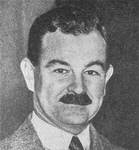
Brigadier Claude
NicholsonThe defence of Calais would be carried out by Calais Force. This force contained one battalion each from the King’s Royal Rifle Corps (60th Rifles), the Queen Victoria Rifles and the Rifle Brigade, the 229th anti-tank battery of the Royal Artillery and a battalion from the Royal Tank Regiment, equipped with 21 light and 27 cruiser forces. This force would be supported by part of a Searchlight Regiment and part of an anti-aircraft regiment, all under the command of Brigadier Claude Nicholson. 800 French soldiers were also present in Calais, and would defend the citadel, a crucial part of the defences. This gave Nicholson a total of around 4,000 men.
After reaching the coast on 20 May, the Germans stopped for a day. When they began to move north on 22 May, the 10th Panzer Division was given the task of taking Calais, while the 1st Panzer Division was sent towards Dunkirk, with orders to make an attempt to capture Calais on the way past. At full strength each of these divisions contained somewhat over 15,000 men and at least 300 tanks, although on 23 May General Kleist, the commander of the armoured spearhead of the German attack would report that half of his tanks were out of action. Even so, the British and French at Calais would be outnumbered by at least three to one.
In 1940 the town of Calais was still contained within a line of bastions and ramparts. These had been modified after the Franco-Prussian War, but by 1940 this work was over sixty years old. Nicholson soon realised that he would be unable to hold this outer perimeter for long. He decided to make his main stand on an inner perimeter, which covered the northern part of Calais, including the old town, the docks and the citadel. This was a shorter line, and much of it was protected by water lines, in the canals that run through Calais and in the docks themselves.
22 May
The first elements of Calais Force, the Queen Victoria’s Rifles and the Tank Battalion, arrived in the port on 22 May and began to prepare for action. At this point the British were concentrating on preparing to link up with the forces at Dunkirk, and the creation of new supply lines for the B.E.F.
23 May
On the morning of 23 May the British in Calais still did not realise quite how close the Germans actually were. Elements of I Panzer Division had been ordered to make an attempt to capture Calais on their way towards Dunkirk, and by mid-morning columns of German tanks were approaching from the south west. Early in the morning patrols from the Queen Victoria’s Rifles were sent out to find the Germans, but they were perhaps rather too successful, for none returned.
Later in the morning three squadrons of tanks under Lt.-Colonel Keller left Calais, heading for St. Omer, twenty miles to the south east. At Guines, only five miles south of Calais, they ran into the German columns, advancing east from Marquise, and a short battle took place. Although the British tanks eventually retreated north to Coquelles, south west of Calais, this first German attack had been repulsed. I Panzer Division moved on, leaving X Panzer Division to deal with the defenders of Calais.
The day also saw the troops from the King’s Royal Rifle Corps (60th Rifles) and the Rifle Brigade land on the dunes east of Calais, and Brigadier Nicholson reach Coquelles, to prepare to make the attempt to open communications with Dunkirk.
24 May
That attempt began at 2 a.m. on 24 May. It was made by one squadron of tanks and a company from the Rifle Brigade, but soon ran into strong German forces on the road to Dunkirk. Brigadier Nicholson, who was accompanying the attack, was soon forced to call it off. The British pulled back into Calais, and prepared to defend the outer perimeter.
According to German sources, on 24 May the 10th Panzer Division concentrated on sealing off Calais, and did not carry out a systematic attack until the next day. This is almost certainly not how the defenders of Calais saw things. Fighting broke out all around the outer perimeter. By 6 p.m. the Germans had broken through the outer perimeter, and Brigadier Nicholson was forced to move his headquarters from the Boulevard Léon Gambetta to the Gare Maritime, on the waterfront.
Artillery support for the defenders was provided by destroyers of the Royal Navy, along with the Polish warship Burza. These ships made a valuable contribution to the defence of Calais, but the coast was heavy – HMS Wessex was sunk, while HMS Vimiera and the Burza were both damaged. Later in the day HMS Wolfhound and HMS Verity made a trip into Calais, carrying supplies of ammunition, and Vice Admiral J. F. Somerville.
Somerville was able to meet with Nicholson, who gave him a summary of the British position. His men were short of ammunition. He only had two anti-tank guns and two light anti-aircraft guns left. On his return to Britain, Somerville would make a broadcast describing this meeting.
Early in the day the navy began to prepare to evacuate the troops at Calais, but this move did not meet with Churchill’s approval. By now he was coming to the conclusion that the force at Calais would have to fight on for as long as possible, to win time for the B.E.F. to reach Dunkirk, although the final decision would not be made until the following day.
25 May
X Panzer Division made a systematic attack on the inner perimeter during 25 May. By now the inner perimeter was made up of a series of separate posts, which could provide supporting fire, but were otherwise isolated. Despite this the Riflemen were able to hold of the German attacks for the entire day. In mid-afternoon Brigadier Nicholson moved his headquarters for one final time, this time to the citadel, where on the following day he would be captured.
At 9pm, after dinner, Churchill, Eden and Ironside finally decided not to evacuate the troops at Calais. Churchill recorded feeling physically sick after making this decision, one of his first really hard decisions. The following signal was sent to Nicholson that night, although it is not certain that he ever received it.
Despite this final decision, Admiral Ramsey decided to make a small fleet available in case the circumstances changed again. On the night of 25-26 May a flotilla of small ships made their way into the harbour, rescuing the wounded and the survivors of the Royal Marine detachment sent to protect the naval demolition crews.
Every hour you continue to exist is of the greatest help to the B.E.F. Government has therefore decided you must continue to fight. Have greatest possible admiration for your splendid stand. Evacuation will not (repeat not) take place, and craft required for above purposes are to return to Dover. Verity and Windsorto cover Commander Mine-sweeping and his retirement.
26 May
The fighting at Calais lasted for most of 26 May. A German attack in the morning failed, although with low losses, but in the afternoon the defenders began to run short of ammunition. The Germans was able to bring their medium tanks into the battle, and by 4 pm had captured the harbour area. This was followed at 5 pm by a successful infantry assault on the citadel, which saw Brigadier Nicholson captured.
Even then the fighting did not end. British troops retreated into the Courgain, the fisherman’s quarter, and where they held on until 9 pm, when as darkness fell they were ordered to break up into small groups and make their own way out of the town. By now there was little chance, and the majority fell into German hands.
The last British ship to visit Calais was the yacht Gulzar. She entered the harbour just after midnight, remaining until 1.00am on 27 May. She eventually picked up a part of 50 men from the end of the breakwater, and then made her way back to safety in Britain.
Conclusion
At the time the defence of Calais was seen as having been of vital importance. Calais was the last defended location before the Gravelines position, the western flank of the Dunkirk beachhead. According to this view, if Calais had not been held for as long as it was, then there would have been nothing to stop the Germans from sweeping into Dunkirk while the BEF was still engaged around Lille.
Since the war the importance of the defence of Calais has been constantly downplayed. Instead Hitler’s “halt order” of 24 May has been blamed for the German failure at Dunkirk. This forbade the German tanks from crossing a line running south from Gravelines, and remained in place for two days, before being lifted on 26 May. In the most extreme arguments, the defence of Calais has no significance at all. The post-war writing of the German generals is the main source used to support this viewpoint. This is always a dangerous line to follow – the German generals were generally unreliable witnesses, more concerned with the defence of their own records than with historical accuracy – Rundstedt’s denial of any part in the halt order is a classic example of this.
This argument does not stand up to closer examination. The first clashes at Calais took place on 23 May, the day before the halt order, and distracted I Panzer Division from the attack on Dunkirk. On 24 and 25 May, the two days of the halt order, Calais came under constant attack by the Luftwaffe, reducing the resources available to attack at Dunkirk.
At the end of 25 May, when Churchill made the final decision not to evacuate Calais, his choice made perfect sense. Heavy fighting began at Calais on 24 May, the same day that the German tanks stopped. During 25 May the bulk of the BEF was still far from safety. The French position at Gravelines was increasing in strength, but the western flank of the corridor that the B.E.F. would have to use to reach Dunkirk was only defended by scattered units of the B.E.F. German troops had cross Hitler’s halt line at St Omer and Watten and were threatening the best road to Dunkirk. At least one German division was involved in the attack on Calais. If Churchill had pulled the British garrison out of Calais on the night of 25-26 May then that division would have been available on 26 May when Hitler lifted the halt order. Finally, one should always remember that none of the Allied leaders knew about the halt order (something that some authors do seem to forget).
Ultimately it is impossible to be sure what might have happened on 26 May if the German troops that were engaged at Calais had been free to take part in the attack on the Dunkirk position, but what we do know is that without them the Germans failed to break through the lines being formed at Gravelines while they were at their weakest, a failure that allowed over 300,000 Allied troops to escape from the German trap.
0 -
An interesting trio to man captured at Calais.
1. 1939-45 Star
2. War Medal
3. E.M. 'Territorial' (G.VI.R. 1st type) Gnr. R.L. Roberts, R.A.
with cap badge and pair of collar insignia.
With a copy of the P.O.W. roll showing that he was P.O.W. no. 7525 at Stalag 20A at Thorn, Poland. With copy P.O.W. papers - Ronald Lloyd Roberts was born on 18/4/18 and enlisted on 18/10/37, a capstan operator living at 10 Coisley Road, Woodhouse, Sheffield. He was taken prisoner at Calais on 27/5/40 whilst a Gnr. in the 2nd Searchlight Bty., 1st Searchlight Regt. R.A. The unit took part in the fighting at Calais and one of its officers was the famous escaper and politician Airey Neave. The recipient was held at Stalag 20A from 12/5/41 to 23/2/45 and throughout that time worked as an automobile cleaner. He was lectured on escape and evasion by Major Deighton at Hereford on 10/3/40. During his captivity he was cross-examined by the Germans on the whereabouts of his unit and on the nature of his duty as a British soldier. Under 'Sabotage' he wrote - "continued destruction to enemy vehicles during the time 12/9/41 to 23/2/45 as my work brought me in contact with transport due for front line". He also mentioned the invaluable help of a Polish family, including Miss Jadwiga Licau of Thorn, from November 1942 to April 1945; she brought food to him in Stalag 20A - bread, eggs, meat, butter, etc.; in 1945 she sheltered and fed him and supplied him with civilian clothes and cash. She took a serious risk and was caught and interrogated by the Gestapo. He also reported - "2nd March 1945 - Breitgasse, Thorn - articles stolen - gold wristlet watch - Russian captain, 2 soldiers - violently threatened by the soldier holding machine gun - value £10/-/-."
He died at Colchester, Essex, in April 2001 aged 83.
In Sebag-Montefiore"s book, Dunkirk, he writes on what the 1st Searchlight Regt. did in the battle:
At 2PM on 23 May a group of some fifty men from the 1st Searchlight Regt. blocked the 1st Panzer Division's attempt to cross the Calais-St. Omer road near the village of Les Attaques. (This village is some three miles south-east of Bastion 6 on Calais' outer perimeter). Using bren guns, rifles and anti-tank rifles, as well as a bus and a three-ton lorry as barricades, the 1st Searchlight Regiments' C Troop held up the German panzers from some three hours at the village before being forced to surrender. German panzers were held up for another two hours by another group from the same regiment near the village of Le Colombier, one mile further to the north-west up the Calais-St. Omer road. By the time this latter group retreated to Calais' outer perimeter at 7p.m., the 1st Panzer Division had registered that Calais was strongly held and could not be taken with a surprise attack.
 0
0 -
If you were a supplier of awards to the 'Reich' during the time, this would have been the address to have.
Kuinmer,
Halle A/S,
Adolf Hitler Ring 1
It's one you don't see often. There's another bar shown earlier (No. 8) that has the same label, but is WWI. Your bar is very nice, thanks for posting!
0 -
Another WWI ribbon bar with label.

 0
0 -
-
German ribbon bar with Turkish awards and label.
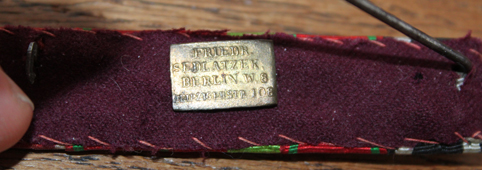
 0
0 -
A nice frackenspange.

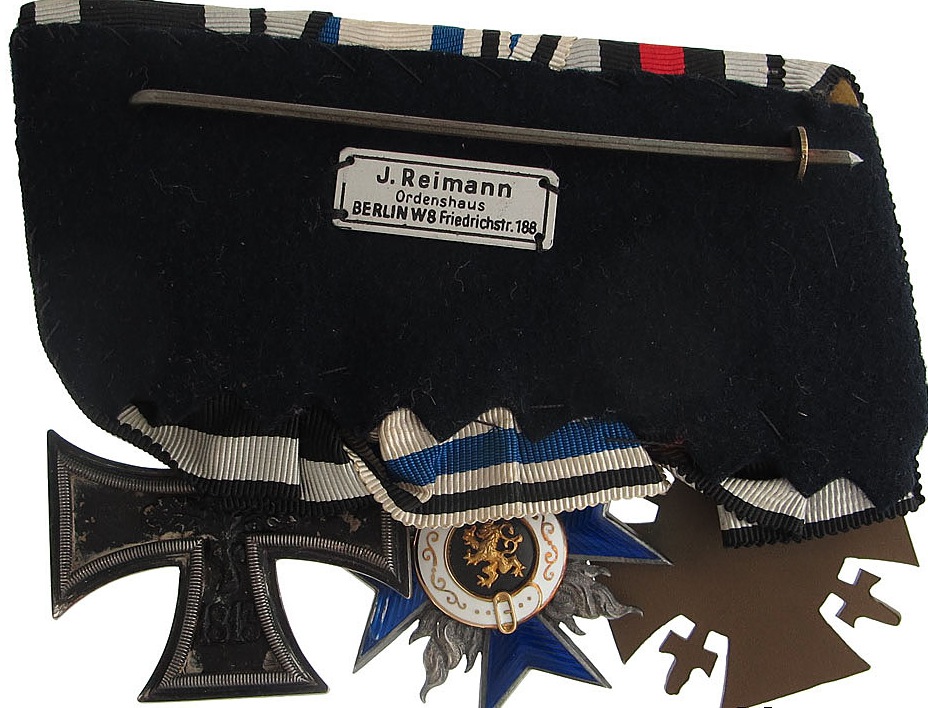
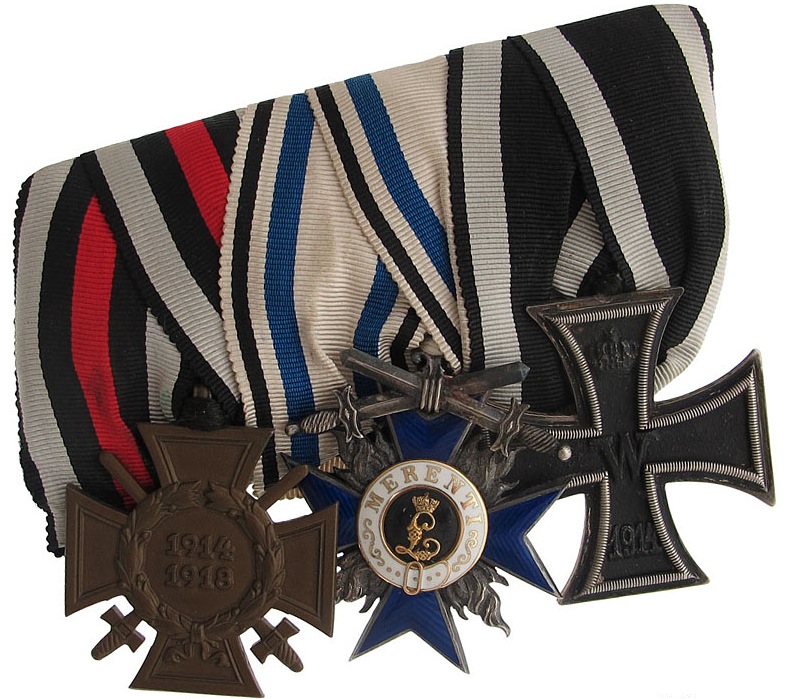 0
0 -
More recipients.



 0
0 -
Kelly Johnson being awarded his National Security Medal by President Reagan.
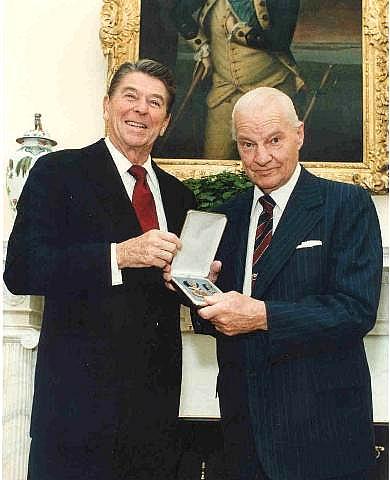 0
0 -
Pretty darn rare .
Sometimes engraved privately, but I have NEVER seen one on a medal/ribbon bar- EVER.
Man, the book you could write about these medals and the people who got them. Many were in the NSA.
That is a rare medal- if actually awarded. I have always wondered if foreign (esp. British/Canadian) intelligence folks got this medal.
The CIA has their own awards.
My local AFIO group has an awardee who is not on the list and he showed me his citation diploma once.
His was given for ease dropping on the Khmer Rouge in situ in 1971-73. He was in navy intelligence, although tasked by the NSA at the time.
Fascinating; I wish there were more on the medal as well as the exploits it took to be awarded one, but you know what NSA means, eh? "Never Say Anything." ; ) I know a number of people in the local AFIO group here and will ask around the next time I see them. Thanks for the tip!
0 -
Executive Order 10431--National Security Medal
Source: The provisions of Executive Order 10431 of Jan. 19, 1953, appear at 18 FR 437, 3 CFR, 1949-1953 Comp., p. 927, unless otherwise noted.
By virtue of the authority vested in me as President of the United States and as Commander in Chief of the armed forces of the United States, it is hereby ordered as follows:
1. There is hereby established a medal to be known as the National Security Medal with accompanying ribbons and appurtenances. The medal and its appurtenances shall be of appropriate design, approved by the Executive Secretary of the National Security Council.
2. The National Security Medal may be awarded to any person, without regard to nationality, including members of the armed forces of the United States, for distinguished achievement or outstanding contribution on or after July 26, 1947, in the field of intelligence relating to the national security.
3. The decoration established by this order shall be awarded by the President of the United States or, under regulations approved by him, by such person or persons as he may designate.
4. No more than one National Security Medal shall be awarded to any one person, but for subsequent services justifying an award, a suitable device may be awarded to be worn with the Medal.
5. Members of the armed forces of the United States who are awarded the decoration established by this order are authorized to wear the medal and the ribbon symbolic of the award, as may be authorized by uniform regulations approved by the Secretary of Defense.
6. The decoration established by this order may be awarded posthumously.
Editorial note: The accompanying document, which was approved by the President on Jan. 19, 1953, was published with Executive Order 10431.
Regulations Governing the Award of the National Security Medal
Pursuant to Paragraph 2 of Executive Order 10431, the following regulations are hereby issued to govern the award of the National Security Medal:
1. The National Security Medal may be awarded to any person without regard to nationality, including a member of the Armed Forces of the United States, who, on or after 26 July 1947, has made an outstanding contribution to the National intelligence effort. This contribution may consist of either exceptionally meritorious service performed in a position of high responsibility or of an act of valor requiring personal courage of a high degree and complete disregard of personal safety.
2. The National Security Medal with accompanying ribbon and appurtenances, shall be of appropriate design to be approved by the Executive Secretary of the National Security Council.
3. The National Security Medal shall be awarded only by the President or his designee for that purpose.
4. Recommendations may be submitted to the Executive Secretary of the National Security Council by any individual having personal knowledge of the facts of the exceptionally meritorious conduct or act of valor of the candidate in the performance of outstanding services, either as an eyewitness or from the testimony of others who have personal knowledge or were eyewitnesses. Any recommendations shall be accompanied by complete documentation, including where necessary, certificates, affidavits or sworn transcripts of testimony. Each recommendation for an award shall show the exact status, at the time of the rendition of the service on which the recommendation is based, with respect to citizenship, employment, and all other material factors, of the person who is being recommended for the National Security Medal.
5. Each recommendation shall contain a draft of an appropriate citation to accompany the award of the National Security Medal.
0 -
Some important recipients of the National Security Medal:
- Major General William Joseph Donovan - OSS
- Allen Dulles - Director of the CIA
- William F. Friedman - Army Signals Intelligence Service - broke Japan's Purple Cipher
- Robert M. Gates - Director of the CIA
- Richard Helms - Director of the CIA
- J Edgar Hoover - Director of the FBI
- Lawrence R. Houston -
- Clarence Leonard Johnson - System Engineer
- Major General Edward Landsdale USAF; OSS & CIA
- John McCone - Director of the CIA
- Frank Rowlett - Technical Director of Armed Forces Security Agency
- Adm. Wiliam O. Studman, USN - Director of the CIA
- Adm. John Scott Redd - Director of National Counterterrorism Center
- Walter Bedell Smith - Director of CIA
- Michael Hayden - Director of NSA and CIA
- William H. Webster - Director of FBI and Central Intelligence
- William F. Raborn - Director of the CIA
- James R. Schlesinger - Secretary of Defense
- Brent Scowcroft - National Security Advisor
- Kelly Johnson - Engineer (Skunk works)
- Diana Lady Dougan - Former US Ambassador
- Adm. Bobby Ray Inman - Director of NSA and Dep. Director of CIA
- Stansfield Turner - Director of NSA
0 -
Thank you for sharing, it is a quite remarkable-looking beast, isn't it? Not sure I have ever seen such good images of it either.
Is there any chance you'd permit me to use them on my website? (With, of course, full acknowledgement!)
My pleasure. Do you know if it's rare or scarce... I just thought it was interesting and from what I read historically very interesting.
0 -
No longer awarded, but very striking looking. Does anyone know about the rarity of these? This is way out of my area of interest, but I thought it was interesting.
The National Security Medal was a decoration of the United States of America officially established by President Harry S. Truman in Executive Order 10431 on 19 January 1953. The medal was awarded to any person, without regard to nationality, for distinguished achievement or outstanding contribution on or after 26 July 1947, in the field of intelligence relating to the national security of the United States.
The National Security Medal was authorized to both civilians and personnel of the United States military and was an authorized decoration for display on active duty uniforms of the United States armed forces. In such cases, the National Security Medal was worn after all U.S. military personal decorations and unit awards and before any military campaign/service awards and foreign decorations.
Additional decorations of the National Security Medal were denoted by a bronze oak leaf cluster.
Upon establishment of the National Intelligence Awards Program by the United States Intelligence Community, this highest award was replaced with the National Intelligence Distinguished Service Medal.
It was last awarded on 16 January 2009.
A list of some recipients can be found at: http://www.nndb.com/honors/213/000059036/
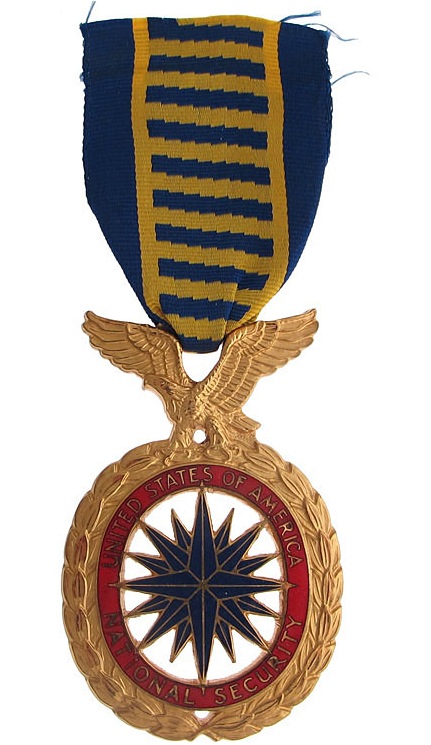
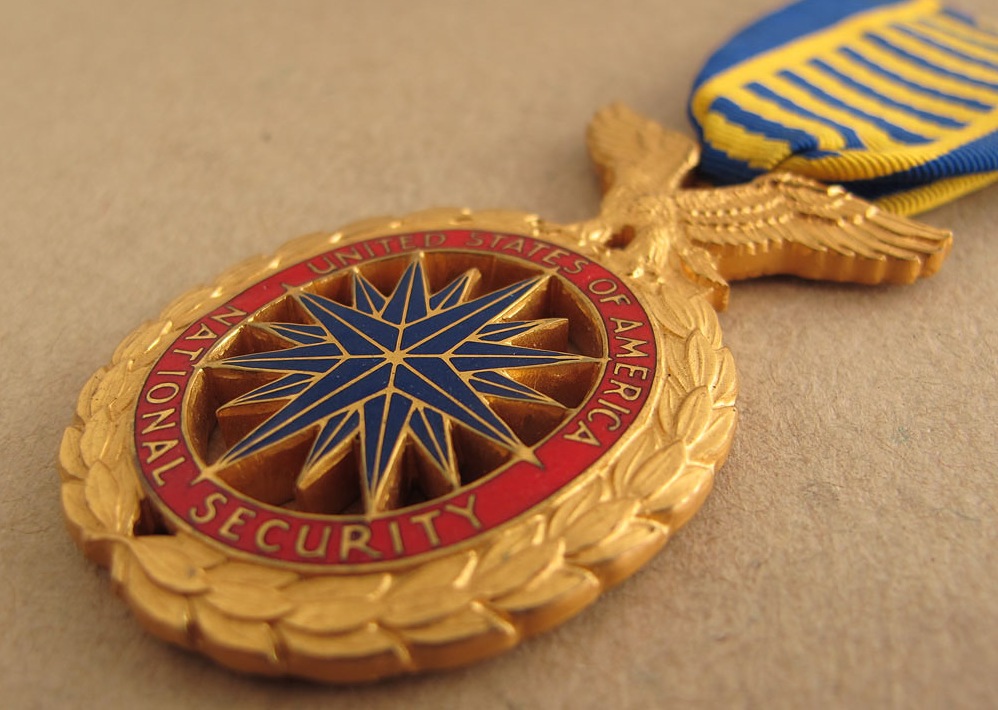
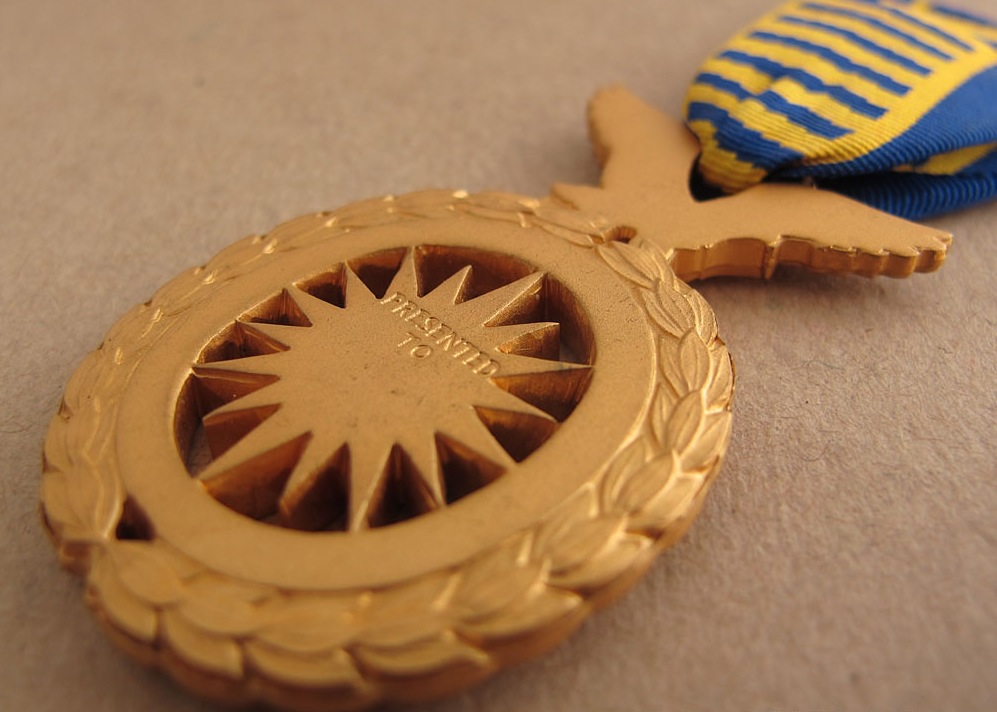
 0
0 -
A Uhlag Luftwaffe Long service bar.

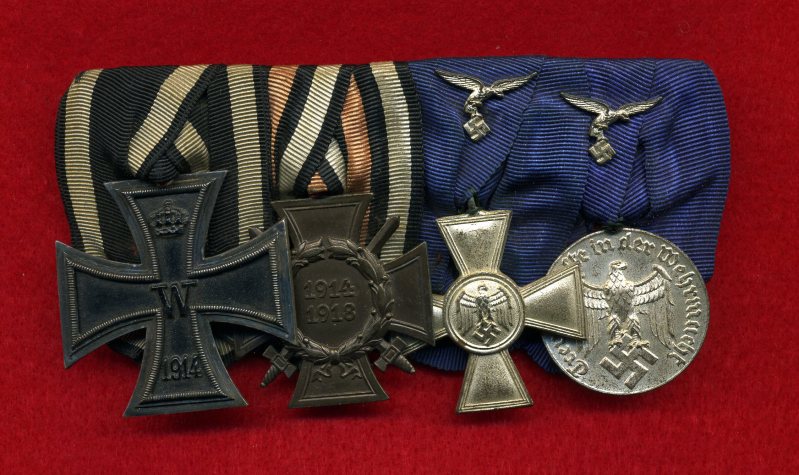 0
0 -
A nice long service bar by Borchard of Hannover.
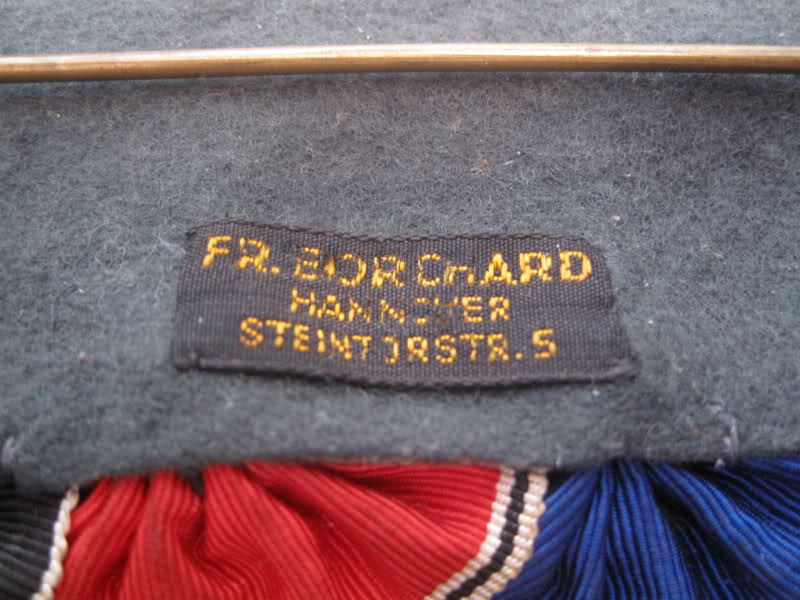

 0
0 -
A nice bar to a fireman.
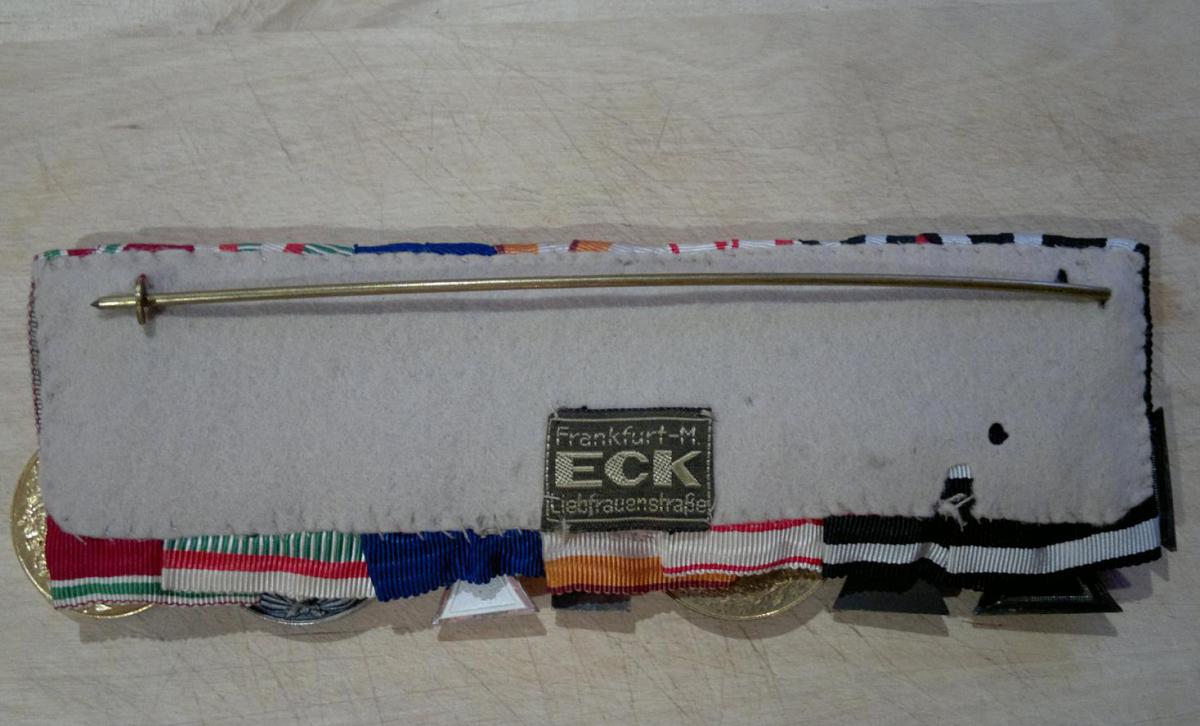
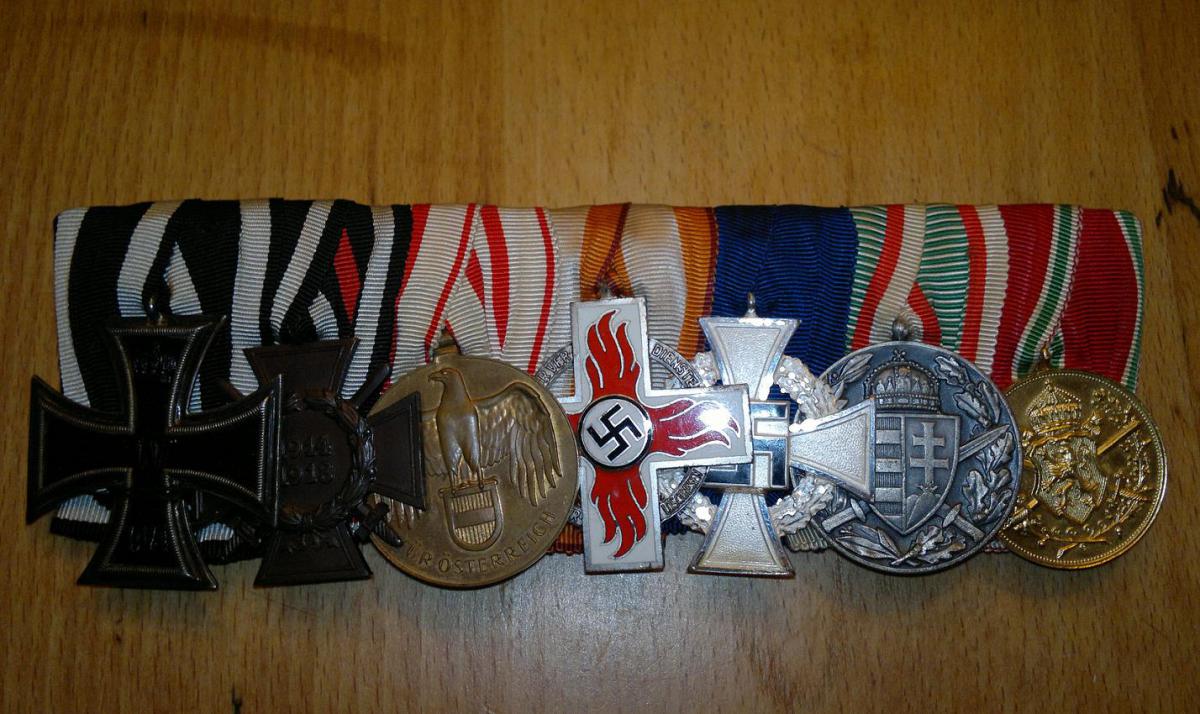 0
0 -
Nice bar! Do these ever have tailor's labels?
0 -
Dont know why I keep picking these up....
Because you're a good Bavarian Catholic??? : )
0



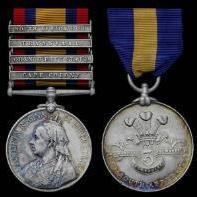
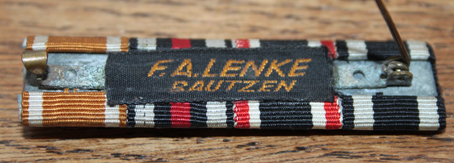
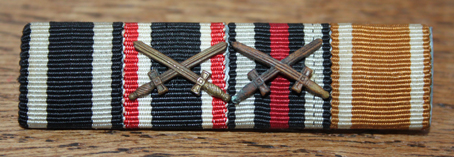
The Korean War is NOT forgotten
in Modern Campaigns and Conflicts
Posted
Yep, what an eventful time that was and why I tried to get at least pairs to all the units involved in both battles... truly great historical pieces that graced the chest of the heros who fought against the Chinese and N. Koreans. (See early pics in the thread) To be honest, I don't know why more people don't collect Korean War medals.